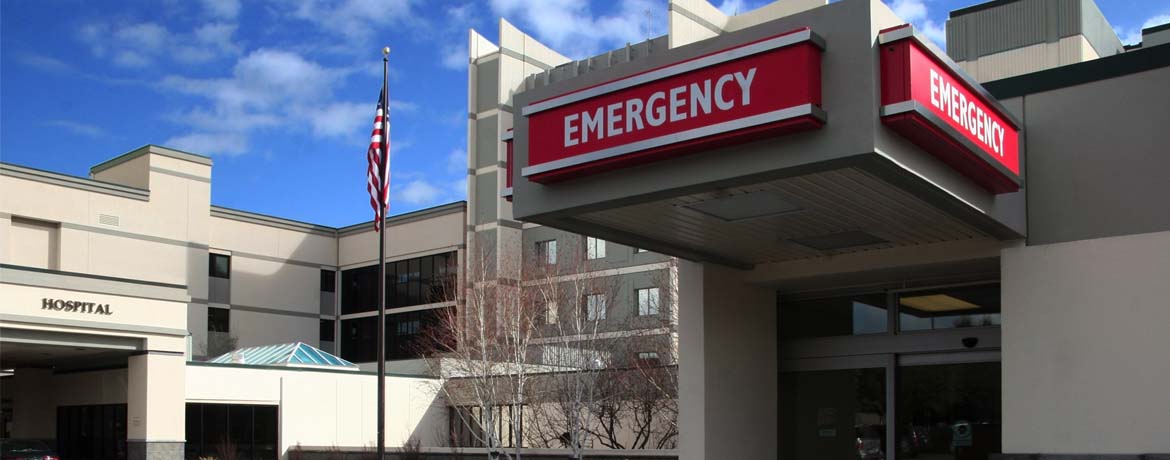Going to the hospital is already a difficult experience. Arriving at the hospital should be as seamless and as stress-free an experience as the time spent inside the waiting room or with the doctor. After all, health should be the patient’s No. 1 priority — worrying about where to put the car shouldn’t be tacked onto the already-long list of concerns.
As a major stressor but a necessary offering, parking presents a conundrum for facility managers: how can parking have a positive, or at least neutral, impact on the patient experience? Some have turned to valet parking, but that’s not always a practical or widely-used option. What self-guided solutions are there for hospital parking decks and lots?
Parking at the hospital: unique challenges

Hospitals are always on, operating 24 hours a day, 7 days a week. Doctors, nurses, patients and visitors come in and out at all hours. Unlike the normal 9 to 5 hours kept at a corporate campus or business park, facility managers should assume that hospital parking lots, valet and other related services are utilized around the clock.
Hospitals attract patients of varying abilities, health levels and strengths, and the facility needs to accommodate for those needs within the space they have. Some undergoing treatments may find it difficult to walk a long distance, which makes reserving spots a necessity. The same is true for those with disabilities — more spots are necessary to accommodate for specially-equipped vans, those with limited mobility due to injury or health condition, and the elderly.
And that’s not even taking the challenges posed by facilities located in cramped quarters. New Brunswick, one of New Jersey’s oldest cities, has some of the largest and most famous corporations, universities and medical facilities crammed into its 5.7 square miles. That means tens of thousands of people pour into the city every single day — and those people need a place to put their cars in a city known for strict parking rules.
Two major hospitals, Robert Wood Johnson University Hospital and St. Peter’s University Hospital, are located less than a mile from each other, each one with its own niches that attract patients, doctors and researchers from all over New Jersey. The streets in between the two hospitals are tightly governed by resident permit policies, alternate side rules and closing public garages, driving people to use valet service and the hospital’s privately-owned self-guided parking lots; Robert Wood Johnson and St. Peter’s offers both. Even with a train station and bus stop just steps away from the hospital’s main lobby, those options aren’t always accessible to those who need to visit facilities for treatment. This suggests that the hospital’s lots are always some degree of busy, and one can assume that they are usually relatively crowded.
The potential loss of or increase in parking spots is a constant tug-of-war as RWJ continues its expansion throughout New Brunswick’s downtown. This seemingly never-ending challenge is compounded by the change in traffic flow during the seemingly endless construction, making it more confusing and yes, stressful, for patients coming for treatment or visitors cheering up a sick loved one.
New Brunswick is far from alone in its parking struggles. Still, no matter where in New Jersey a hospital is located, the parking experience should be organized and managed in a way that keeps patients as relaxed as possible during a time of already-heightened worry. The right parking management solution can help ease that burden at little expense to the hospital.
Parking management systems that help hospitals reduce stress

Many hospitals successfully use a combination of valet and self-parking to keep patients and traffic moving. Those solutions can be improved, however, by using an affordable parking management system, designed to make the process easier and less stressful for patients, staff and visitors alike.
Level guidance systems, parking guidance systems and a video-based location service work together to make parking the car — and locating the parked car when it’s time to leave — as simple a process as possible. At the entrance of the garage is a customized LED sign which shows in real time how many spots are available on each floor. The in-lane parking guidance system marks open spots with green lights, while the video-based location service records license plates, allowing parked guests to look up their location at a kiosk. These technologies make it easy for visitors to safely and easily stow their cars.
When visiting the hospital, patients should be focused on one thing: their health. As ambassadors of a positive experience during a trying time, hospitals have a stake in making the entire experience from arrival to discharge as smooth as possible for patients, including parking. After all, reducing stress goes a long way for well-being, and a parking management system is a simple way to make a patient’s day a little bit easier.
